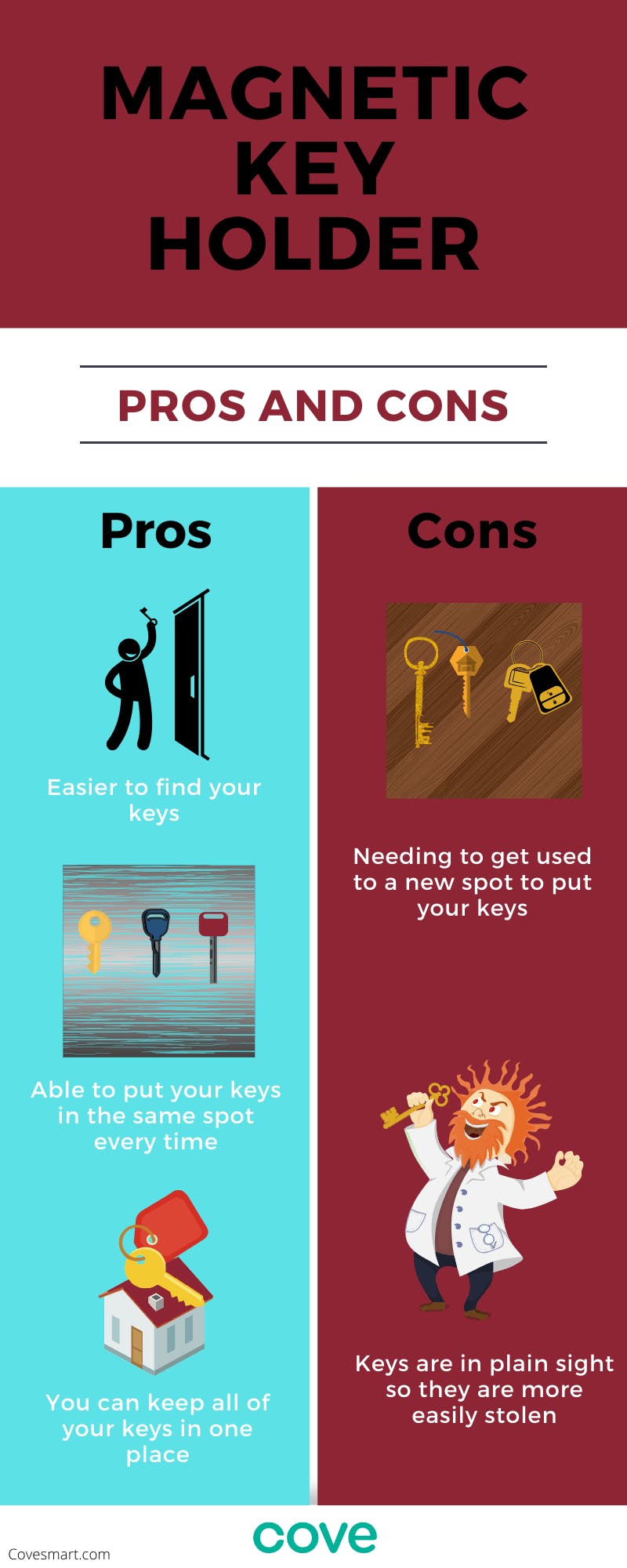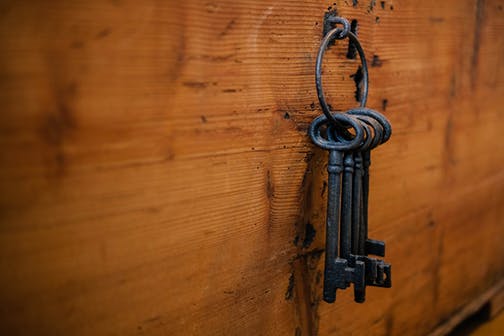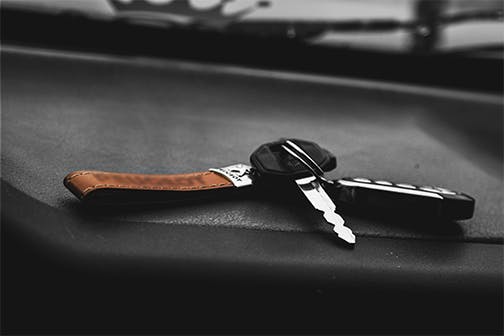We all remember a time when we were rushing and couldn’t find our keys. We spent long minutes struggling to find where we put the keys and eventually found that the keys had been kicked under the shelf or were already hanging from the door. It’s frustrating not to know where your keys went, especially when you’re in a hurry. It’s the same story for your key fob and spare key; it seems like you can never find your keys when you need them. Well, we have an easy fix for this. A magnetic key holder can help you to organize your keys and keep them in one place.

Pros and Cons of Using a Magnetic Key Holder
First of all, what is a magnetic key holder, and why might you want to use one in your home? A magnetic key holder can be used either on a key rack or a key chain. It connects the key magnetically to one location using neodymium magnets. It uses strong magnets to hold the key in one place. When you need to use the key, you can simply detach the key by pulling it from the magnetic wood.
You can also create or buy a magnetic board and hang your keys in your front entryway. Or, you can hang your keys on the refrigerator. The goal of a magnetic key holder is to create a consistent place for you to place your keys every time you go inside. If you lose your keys in your car (assuming you have a touch start car), you can create a magnetic key holder for the car as well. The best thing about magnetic key holders is that they are easy to make on your own. Rather than buying a key holder, you can easily make a magnetic box for your keys.
Now that we understand what a magnetic key holder is, let’s talk about the pros and cons of using a magnetic key holder. To make reading this more convenient, we have separated the pros and cons into two different sections:

Pros of a Magnetic Key Holder
Using a key holder with strong magnets will make it easier to find your keys. You can rely on having your keys in the same spot every time you get home. The goal of this is to make it a habit to leave your keys on the key box magnets. Once this becomes a habit, you don’t have to worry about misplacing your keys. Magnetic key holders can be a great way to protect your keys in your house. Some boxes are more like security safes. They can lock up spare keys while magnetically holding them.
They can also keep your keys in one location. Rather than having one set of keys in the junk drawer and the other set of keys in the bottom of a random purse, you can keep all of your keys in one place.
Cons of a Magnetic Key Holder
For some homeowners, a magnetic key holder might not work. If you already have a place for your keys, then trying to switch to a magnetic key holder might be confusing.
Most magnetic keyholders will leave your keys in plain sight. If you’re worried about someone you know stealing your keys, then you will need to find a way to hide your key holder. It’s worth having a home security system as an additional layer of security. This way, even if someone does use your own key to get in, your alarm will warn you.

Best Uses for Magnetic Key Holders
When you decide to switch, and begin to use a magnetic key holder, you might start to wonder what the best uses for the key holder are. To get the most out of your key holder, there are three main uses for it: hiding your keys, collecting your keys, and storing your keys.
If you’re interested in using a key holder for hiding a key, there are a few ways you can go about creating the design. Some sites will sell magnet key holders that can be hidden in a shelf or drawer. Other magnetic holders lock the key up in order to protect the key. The key can only be released using another magnet or key fob. Some homeowners even use magnetic holders for their spare key to hide the key outside. An example of a magnetic holder for spare key is using a rock with a magnetic strip attached to the bottom side of the rock. This design hides the key because the key will attach to the bottom side of the rock. If an intruder is looking for the key and they lift up the rock, they won’t see the key because it will stay attached to the bottom of the rock. It’s a quick DIY design that can make hiding your spare key easier.
If your goal for your keyholder is to collect your keys, you will need to take a different approach. Rather than worrying about a design that will hide your keys, you need a design that will collect your keys. This will be a larger project. Usually, for this project (if you’re doing it as a DIY project), you can use a long strip of wood that fits nicely on the wall. Then, attach a strip of strong magnets to the wood and hang the wood on the wall. Whenever you find a key in your house or car, you can simply hang the key on the magnet. Over time, this will help you to collect all of the loose keys in your house and hold them all in one place.
The last option for a magnetic key holder is that it can be a place to store your keys. For this, a simple strip of strong magnets in a drawer should work. Since you don’t need the keys to be out in the open, hiding them in a drawer will work fine. You can place the keys on the strip of the magnet in any order, and the keys won’t be jostled since they are secured to the magnet strip.
Most Secure Locations to Put a Magnetic Key Holder
If you’re worried about someone stealing your keys, you may want to consider placing the keys in a more secure location. Obviously, the least secure location is outside of the house. It is risky to leave a magnetic key holder outside of the house, no matter how safe you believe the neighborhood to be.
Instead, put the key holder in a drawer, on top of the refrigerator, or in your bedroom. Although hanging the key holder by the door on the wall might be the most convenient place for it, it isn’t the safest. Children can easily reach for keys by the door and run off with the car keys. Instead, put the key holder in a private office or room of the home. There is no perfectly safe and convenient place in the home to put a key holder without sacrificing either convenience or safety. Since we consider ourselves to be home security experts here at Cove, we will always recommend that you err on the side of safety rather than convenience.
